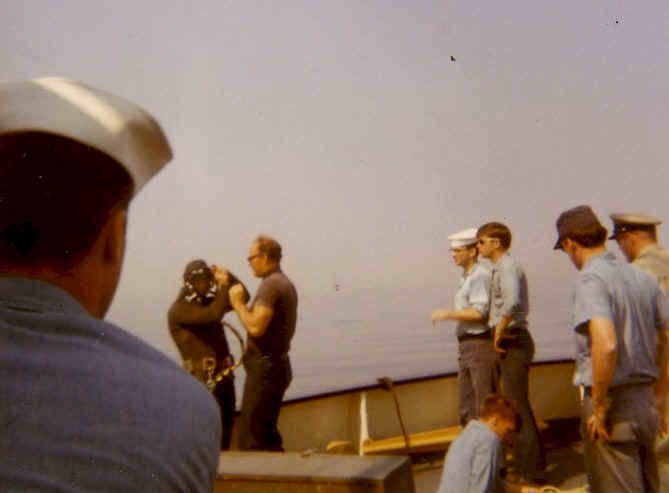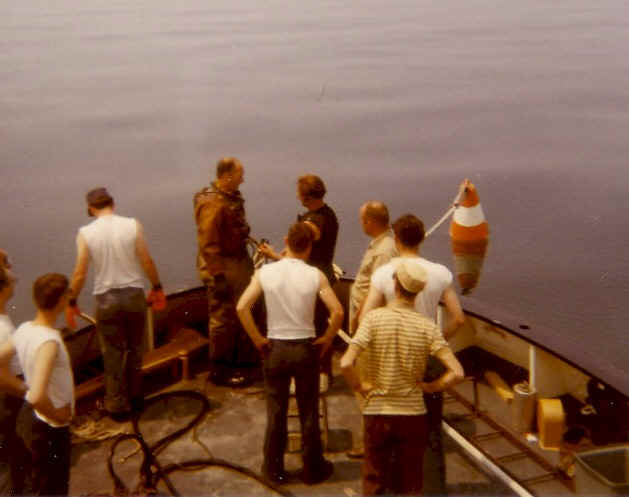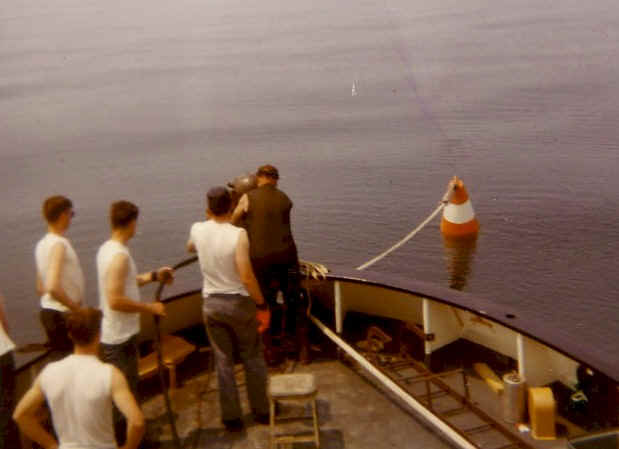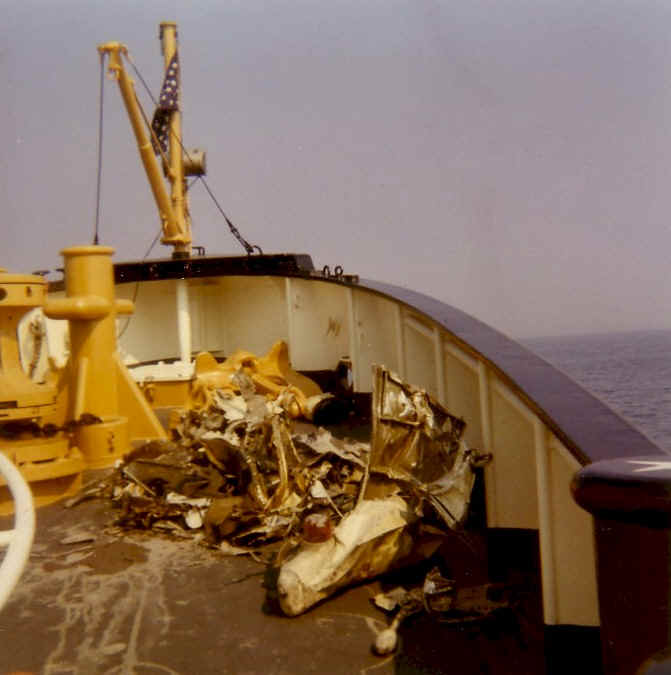Recovery of crashed Tag Airliner from Lake Erie
from the memory of Doug O'Dell
.
We were breaking ice in the Detroit / Toledo region working "Operation Coal Shovel", escorting coal ships in transit between these two cities. This was an annual duty of the Kaw, maintaining shipping lanes as long as possible each winter until weather finally close them down.
While in the Detroit area, on Wednesday, January 28, 1970, at approximately 1928 hours, we received an urgent radio message from Group Cleveland of a Tag airliner disappearing from radar about 18 miles northwest of Cleveland. The aircraft was a DEHAVILAND-Dove H-104, registration: N2300H, a nine seat commuter plane. The Aircraft departed Cleveland's Burke Lakefront Airport and was headed for Detroit Michigan.
The CGC Bramble and CGC Kaw were Immediately diverted from their current duties and dispatched to the area the airline was last reported on radar. Lake Erie was frozen solid at the time so there was a real chance that the airline may have survived putting down on the ice.
We (the Kaw) were about 4 to 5 hours away from the area giving favorable lake conditions. I was at the helm and we steamed full ahead for the coordinates given. The CGC Bramble was closer at that time and would arrive on scene first and try to mount a rescue. Having arrived at the scene the Bramble reported finding no apparent survivors, and very little crash debris.
When we arrived we found the Bramble conducting salvage ops and preparing to return to Cleveland. We assumed the search operations and the Bramble left the scene. After setting a buoy to mark the crash site, the Bramble took wreckage and remains to Cleveland. After concluding our search and finding nothing more we also returned to Cleveland.
The following day after taking aboard scuba divers from a private salvage company we returned to the scene to try to locate the wreckage. We also had aboard officers from District and officials from the National Transportation Safety Board as well as side tracking sonar equipment for viewing and recording the bottom of Lake Erie.
We set our search pattern and began searching the lake bottom for anything that looked like aircraft wreckage. It was amazing some of the junk we did find with this sonar. We found at least one shipwreck, and an old coal barge, still loaded with coal. Whenever sonar showed something of interest we'd stop and send a diver down to investigate. I cannot remember how long we were involved with this search but it was at least several days before we finally found the Tag wreckage.
By the time we did find it we had included in our equipment telemetry equipment similar to LORAN, that plotted our position from a point on shore with distance in meters from two fixed locations. We recorded the position of the wreck site and began recovery operations with hard hat divers. We soon learned that the ice and it's movement about the ship was making it extremely hazardous for hard hat operations. It was decided that we would cease recovery and resume at a later time when conditions were safer. As it turned out this time was about three months later.
In early May with NTSB officials aboard as well as hardhat salvage divers, we went to the coordinates recorded for the wreck site. We dropped anchor and positioned the ship above the wreck site.
We had two goals to accomplish, one was to recover the bodies of the crew and passengers, and to recover the two aircraft engines or any other pert of the aircraft that the NTSB thought were pertinent to their investigation. We accomplished both tasks.
We found and recovered the engines and their respective engine mounts which NTSB officials determined were the cause of the crash. The engine mounts were a three point mounting system and the NTSB were able to determine from the parts recovered that it was an inboard forward mount that had failed causing the engine to rotate outboard and shear off the wing.
The one thing they were not able to determine was whether it had failed in flight or prior to taking off, and if it were overlooked by ground maintenance personnel.
Diving ops
Recovered wreckage



